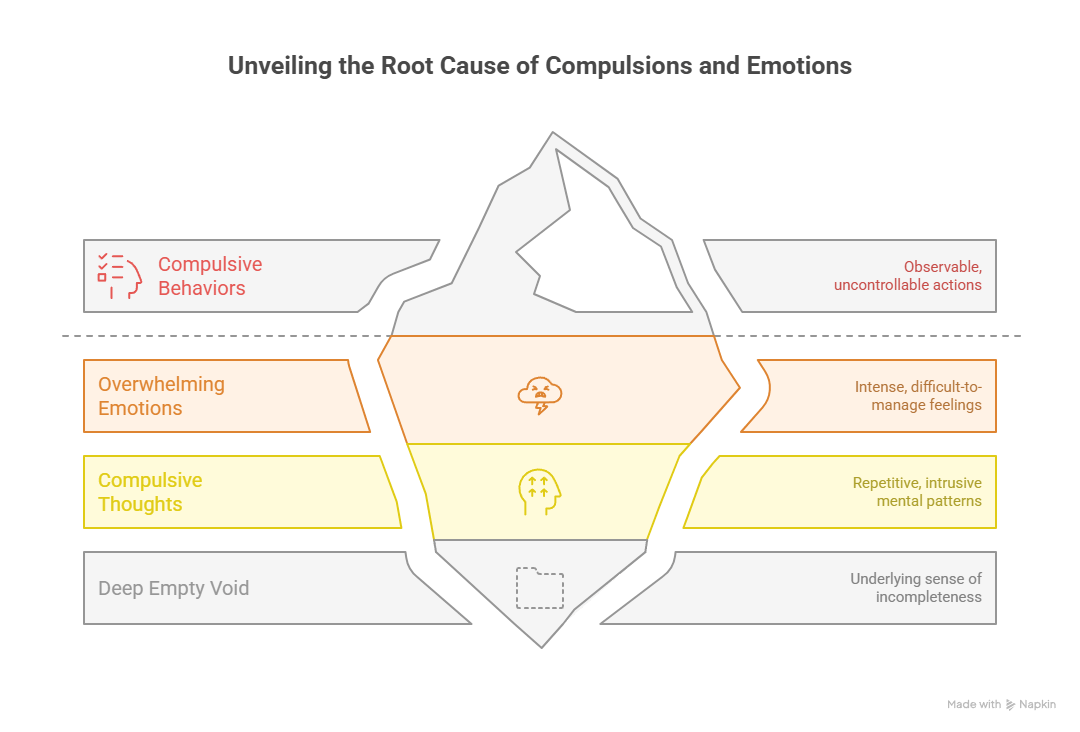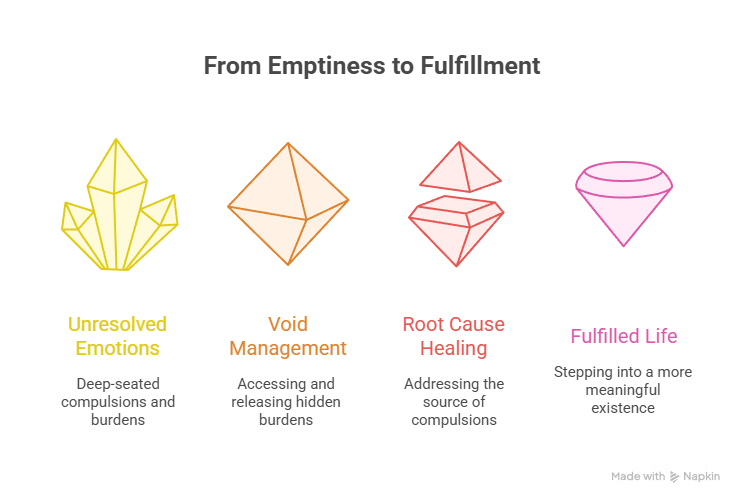As psychologists, we often meet clients who struggle with compulsive thoughts, overwhelming emotions, or uncontrollable behaviors. Despite trying therapy, mindfulness, or even medication, many still feel something is missing—a deep, empty void they can’t seem to fill.
This void is more than just a feeling of emptiness. It is often the root cause of compulsions and unresolved emotions. Left unaddressed, it continues to drive unhealthy patterns in clients’ lives.
The good news? With the right therapeutic approach, psychologists and psychotherapists can help clients identify, release, and heal this void. One powerful method is Void Management, a step-by-step process designed to access the subconscious mind and uncover the hidden roots of emotional emptiness.
In this blog, we’ll explore:
- What the void represents in therapy.
- A step-by-step Void Management process.
- How to integrate this technique into your psychotherapy practice.

Understanding the Void in Therapy
The void represents deep-seated feelings of emptiness, lack, or disconnection that clients often carry unconsciously. It may manifest as:
- Compulsive thoughts
- Addictive or destructive behaviors
- Overwhelming emotional reactions
- A persistent sense of “something missing”
As therapists, our role is to help clients uncover the origins of this void and guide them through a process of release and renewal.
This is where Void Management becomes invaluable—a structured yet deeply transformative psychotherapy technique that blends relaxation, subconscious exploration, and symbolic release.
Step-by-Step Guide to Void Management
Here’s a structured process you can use to help clients work through the void:
1. Inducing a Hypnotic State
Begin by guiding clients into a deeply relaxed, hypnotic state using methods such as progressive relaxation, guided imagery, or focused breathing. This creates safe access to the subconscious mind.
2. Imagining a Corridor with Two Doors
Ask clients to visualize a corridor with two doors, each leading to different aspects of their subconscious.
3. Exploring Door 1: The Room
Have them enter the first door into a room that represents their current thoughts and emotions. Encourage them to observe its details—it offers insights into their inner world.
4. Finding the Basement
Within the room, guide them to a basement door—symbolizing deeper, hidden issues connected to the void.
5. Identifying the Unwanted Object
In the basement, ask them to find an object that doesn’t belong. This object is a metaphor for unresolved pain or suppressed emotions.
6. Removing the Object
Instruct clients to place the object into a box and take it outside to an imagined garden—symbolizing preparation for release.
7. Interpreting and Releasing
In the garden, open the box and reflect on what the object represents in their life. Then, use deep breathing techniques to release associated emotions and beliefs.
8. Receiving a Return Gift from the Universe
After releasing, invite clients to receive a symbolic gift from the universe—a new strength, resource, or insight to replace the void.
9. Reviewing and Revising
Encourage them to revisit the basement and room, checking for any remaining objects or changes needed.
10. Future Pacing
Finally, use future pacing to help clients visualize how these changes will positively impact their lives moving forward.
Why Void Management Works
Void Management is effective because it:
- Accesses the subconscious roots of compulsions.
- Provides a symbolic release of unresolved emotions.
- Allows clients to replace emptiness with empowering resources.
- Uses visualization and integration to anchor transformation.
Unlike surface-level interventions, this process helps clients heal from the inside out, breaking free from patterns that traditional methods may not fully resolve.
Going Beyond: Cognitive Hypnotic Psychotherapy
Void Management is just one of the many transformative techniques taught in the Cognitive Hypnotic Psychotherapy (CHP) Diploma. This comprehensive training program integrates:
- Cognitive approaches
- Hypnosis
- NLP (Neuro-Linguistic Programming)
- Psychodynamic tools
Together, these approaches provide psychologists and life coaches with a holistic therapeutic framework for long-lasting client transformation.

Final Thoughts
Void Management empowers psychologists to help clients face the deepest layers of emptiness, release hidden burdens, and step into a more fulfilled life. By mastering this technique, you not only address symptoms but also heal the root causes of compulsions and unresolved emotions.
👉 Want to integrate advanced tools like Void Management into your practice?
Explore the Cognitive Hypnotic Psychotherapy Diploma and take your therapeutic skills to the next level.
